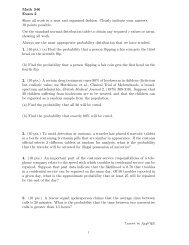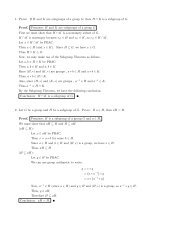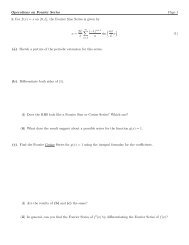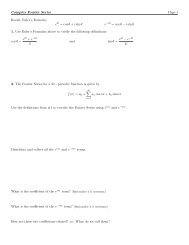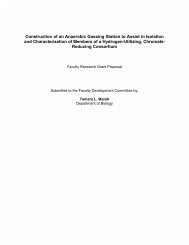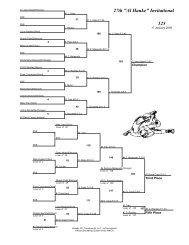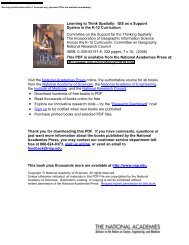CHAPTER 7: CARDIOVASCULAR SYSTEM
CHAPTER 7: CARDIOVASCULAR SYSTEM
CHAPTER 7: CARDIOVASCULAR SYSTEM
You also want an ePaper? Increase the reach of your titles
YUMPU automatically turns print PDFs into web optimized ePapers that Google loves.
Pulse can be felt by placing several fingers on the radial artery which lies near the<br />
outer border of the palm side of a wrist. A carotid artery, on either side of the trachea<br />
in the neck, is another accessible location for feeling the pulse.<br />
Normally the pulse rate indicates the rate of heartbeat because the arterial walls pulse<br />
whenever the left ventricle contracts.<br />
B. Blood Flow<br />
The pulse rate is usually 60–80 beats per minute.<br />
Blood pressure is the pressure of blood against the wall of a blood vessel.<br />
A sphygmomanometer which has a pressure cuff is used to measure blood pressure<br />
in the brachial artery of the arm.<br />
Systolic pressure is the highest arterial pressure reached during ejection of blood<br />
from the heart.<br />
Diastolic pressure is the lowest arterial pressure that occurs while the heart ventricles<br />
are relaxing.<br />
Normal resting blood pressure for a young adult is 120mm mercury (Hg) over 80<br />
mm Hg or 120/80.<br />
The higher number is the systolic pressure and the lower number is the<br />
diastolic pressure.<br />
Blood pressure varies throughout the body. It is highest in the aorta and lowest in the<br />
vena cava.<br />
Both systolic and diastolic pressure decrease with distance from the left ventricle.<br />
Blood pressure is minimal in venules and veins.<br />
Instead of blood pressure, venous return is dependent on skeletal muscle contraction,<br />
the presence of valves in veins, and respiratory movements.<br />
V. The Cardiovascular Pathways<br />
A. The cardiovascular system has 2 major circular pathways: The pulmonary circuit which<br />
circulates blood through the lungs and the systemic circuit which serves the needs of the<br />
body tissues.<br />
B. The Pulmonary Circuit<br />
Deoxygenated blood from the body collects in the right atrium and then passes into<br />
the right ventricle, which pumps it to pulmonary trunk.



